March 25, 2022
12 Gudi Padwa Special Dishes and 10 Ugadi Recipes You Can Try at Home
CM Content Team
Gudi Padwa and Ugadi mark the New Year with grand celebrations, traditional rituals, and an array of festive delicacies. These festivals are incomplete without indulging in popular Gudi Padwa foods that symbolize prosperity and happiness. Families prepare Gudi Padwa special foods using age-old recipes, blending sweet, savoury, and tangy flavours that reflect the spirit of the occasion. Similarly, Ugadi brings a feast of unique dishes, each carrying cultural significance and festive essence. The joy of cooking and sharing these festive meals strengthens bonds and keeps traditions alive. Whether you follow traditional recipes or add a modern twist, these flavourful delights make the celebrations even more special.
Here is a list of 12 Gudi Padwa special dishes and 10 Ugadi recipes you can try at home.
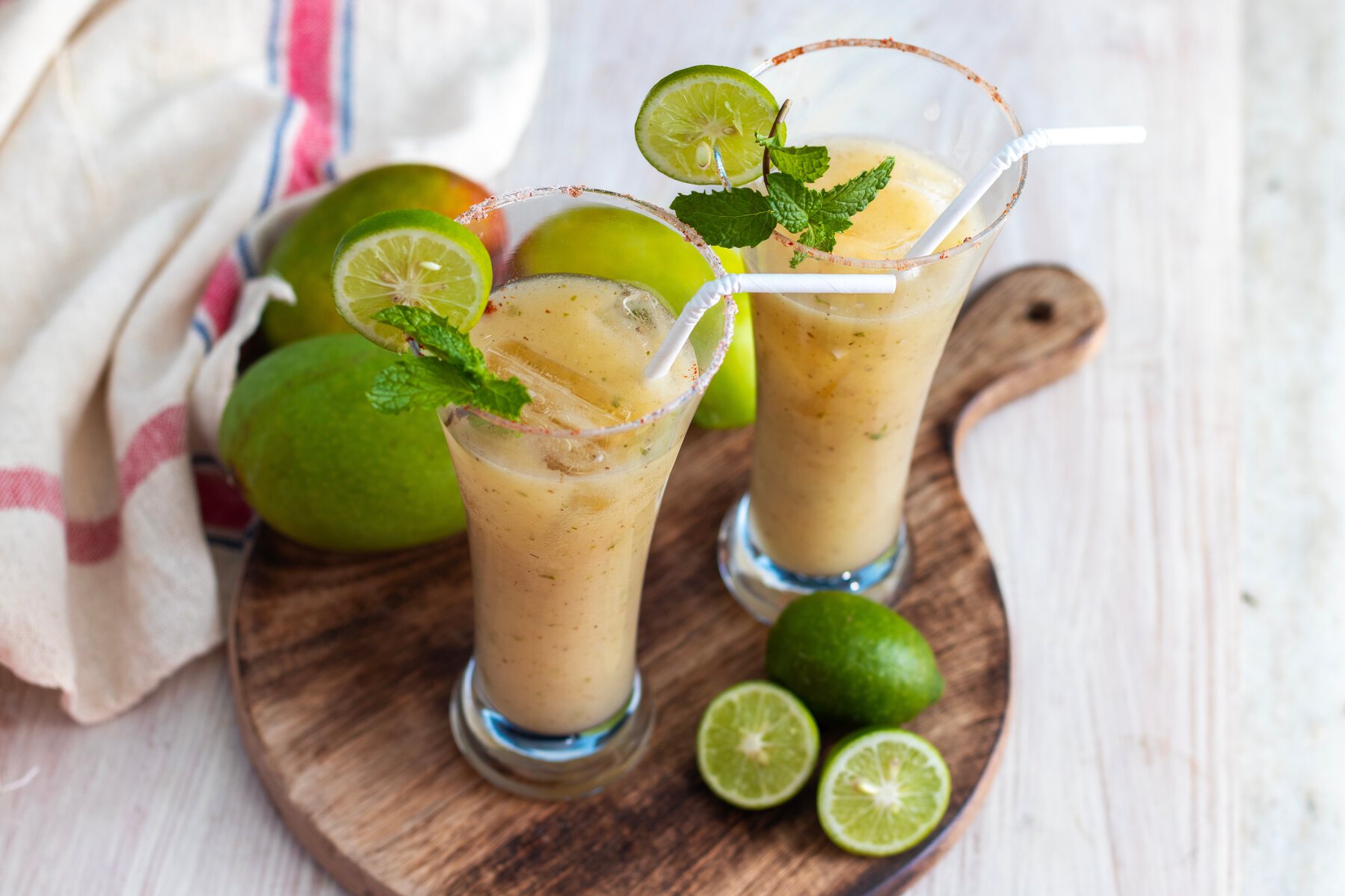
Gudi Padwa, the Maharashtrian New Year, is celebrated with vibrant traditions, joyous gatherings, and an indulgent feast featuring popular Gudi Padwa foods. Among the many festive delicacies, Kairi Panha stands out as a refreshing and traditional drink that perfectly complements the celebrations. Made from raw mangoes, jaggery or sugar, and aromatic spices, this sweet and tangy beverage is not only delicious but also helps beat the summer heat. It holds a special place in Maharashtrian households during this festival, symbolizing the balance of flavours in life.
Best served with:
Kairi Panha pairs beautifully with festive Maharashtrian treats like Puran Poli and Batata Bhaji, balancing their rich flavours with its refreshing tang. It also complements crispy Masala Puri or Sabudana Vada, making it a perfect addition to the Gudi Padwa feast.
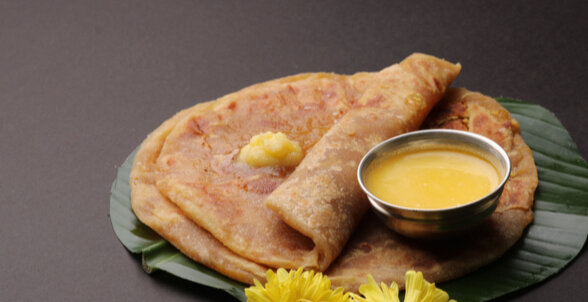
Gudi Padwa celebrations are incomplete without indulging in traditional sweets, and Puran Poli is one of the most cherished Gudi Padwa special foods. This soft, sweet flatbread, stuffed with a delicious mixture of lentils, jaggery, and aromatic spices, holds a special place in Maharashtrian households. Symbolizing prosperity and joy, Puran Poli is prepared with love and offered as a festive treat during auspicious occasions. Its rich, melt-in-the-mouth texture and perfectly balanced sweetness make it a favourite among all age groups.
Best served with:
Puran Poli tastes best with a generous drizzle of ghee and a side of warm milk or katachi amti, a spicy-sour dal made from the leftover chana dal stock. It also pairs well with basundi or shrikhanda, enhancing the festive indulgence.
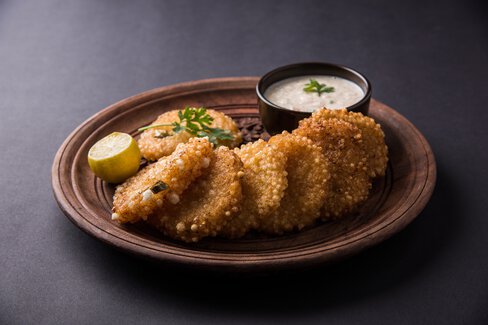
Gudi Padwa is a time for festive gatherings and delicious treats, and Sabudana Vada is a popular snack that adds a crispy touch to the celebrations. Made with soaked sago pearls (sabudana), mashed potatoes, peanuts, and mild spices, these deep-fried vadas are crunchy on the outside and soft inside. A favourite during fasting and festive occasions, this dish is loved for its light yet flavourful taste. Sabudana Vada is a must-have among Gudi Padwa special foods, perfect for enjoying with family and friends.
Best served with:
Sabudana Vada pairs perfectly with cooling coconut chutney or spicy green chutney, enhancing its crispiness with a burst of flavour. It also goes well with a side of sweetened yogurt or tangy tamarind chutney for a balanced taste.
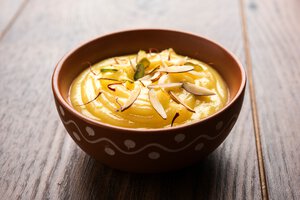
Gudi Padwa celebrations are incomplete without a touch of sweetness, and Shrikhand is one of the most beloved Gudi Padwa special foods. This rich and creamy dessert is made from strained yogurt (hung curd), flavoured with sugar, saffron, and cardamom, creating a luscious treat that melts in the mouth. Often enjoyed as a cooling sweet dish during festive meals, Shrikhand is not only delicious but also easy to prepare. Whether served plain or with fruity variations like mango (Amrakhand), it adds a delightful sweetness to the Gudi Padwa feast.
Best served with:
Shrikhand pairs wonderfully with hot, fluffy puris, making for a classic festive combination. It also complements Puran Poli or dry fruits garnishing, enhancing its creamy richness.
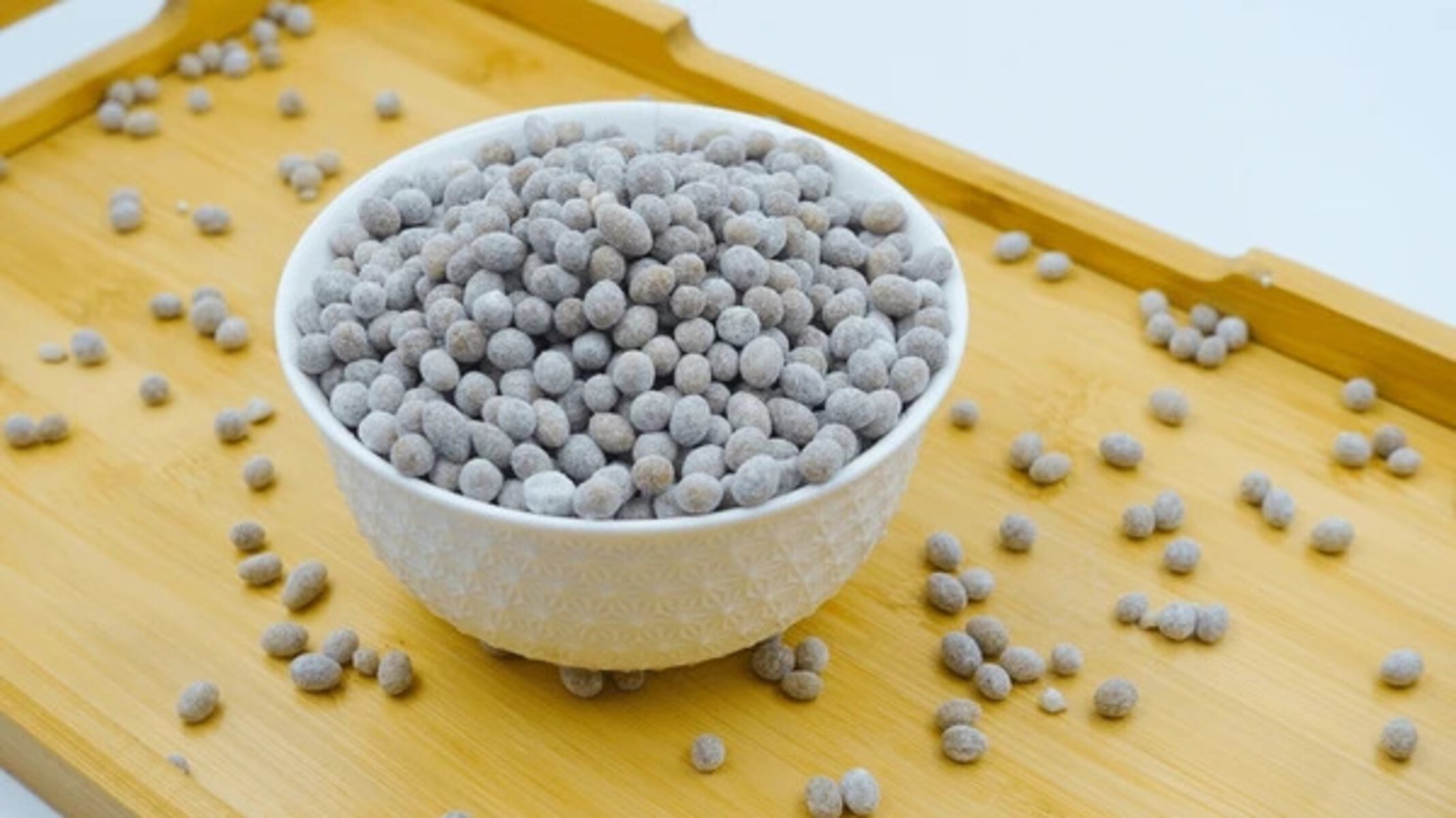
Among the many Gudi Padwa special foods, Panchras Goli holds a unique place as a flavourful digestive delight. This traditional Ayurvedic confection is made from a blend of five essential tastes, sweet, sour, salty, bitter, and pungent, creating a perfect balance of flavours. Prepared using ingredients like tamarind, jaggery, rock salt, dried ginger, and various digestive spices, Panchras Goli is known for aiding digestion after a festive feast. Its tangy and mildly spicy taste makes it a popular post-meal treat, relished by all age groups during celebrations.
Best served with:
Panchras Goli is best enjoyed as a post-meal digestive after indulging in a rich Gudi Padwa feast. It also pairs well with herbal teas or spiced buttermilk (chaas) for a refreshing and soothing experience.
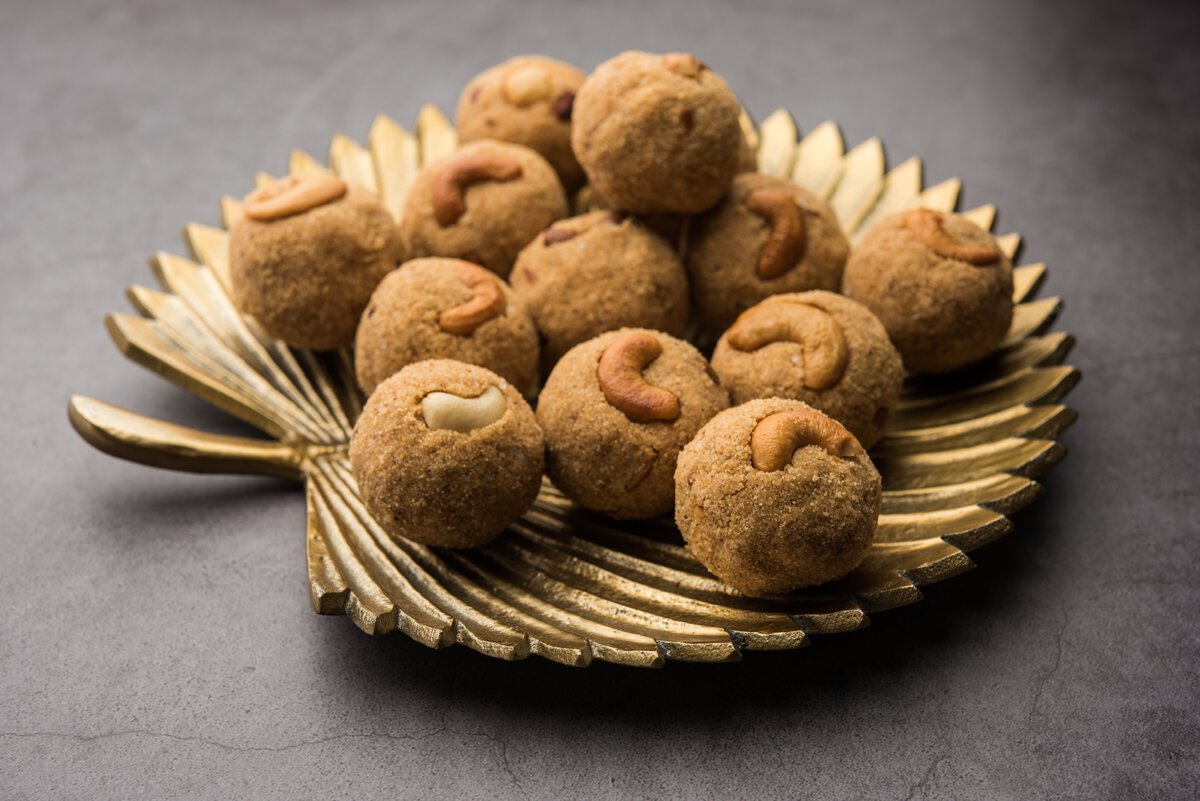
Gudi Padwa is a time for joyous celebrations, and Rava Ladoo is one of the most cherished Gudi Padwa special foods enjoyed during this festival. Made from roasted semolina (rava), ghee, sugar, and aromatic cardamom, these melt-in-the-mouth laddoos are a simple yet flavourful delight. The rich texture and mildly sweet taste make them a favourite among all age groups. Easy to prepare and packed with festive essence, Rava Ladoo is often made in Maharashtrian households as an offering to the deities and shared with loved ones to spread sweetness and joy.
Best served with:
Rava Ladoo pairs well with a warm glass of milk or dry fruit-infused kesar milk, enhancing its rich flavours. It also complements savoury snacks like chivda or namak pare, balancing sweetness with a hint of spice.
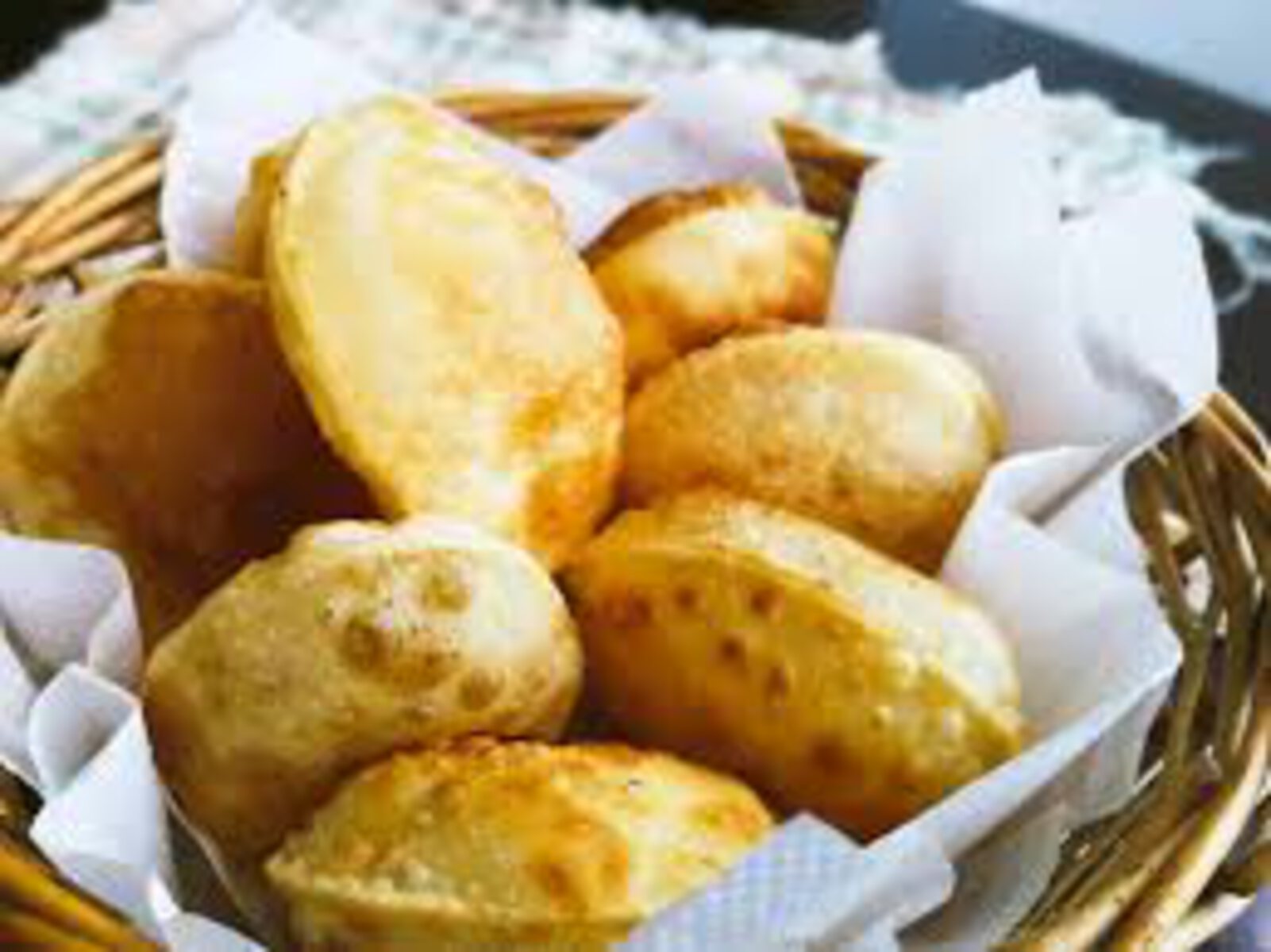
Gudi Padwa celebrations are synonymous with vibrant traditions and a delectable feast, featuring a variety of Gudi Padwa special foods. One such classic dish is Puranachi Puri, a flavourful twist on the beloved Puran Poli. This deep-fried delight consists of a crispy, golden puri stuffed with a sweet and aromatic filling of chana dal, jaggery, and cardamom. Unlike regular puris, Puranachi Puri offers a perfect balance of crispiness and sweetness, making it a festive favourite. Loved for its rich taste and festive significance, this dish is a must-try during Gudi Padwa celebrations.
Best served with:
Puranachi Puri pairs best with a generous drizzle of ghee and a side of warm milk or basundi. It also complements spicy katachi amti, creating a delicious contrast of flavours.

Among the many Gudi Padwa special foods, Kothimbir Vadi stands out as a delicious and crispy festive snack. This traditional Maharashtrian delicacy is made from fresh coriander leaves (kothimbir), gram flour (besan), and aromatic spices, steamed and then shallow or deep-fried to perfection. The combination of earthy flavours and crunchy texture makes it a favourite festive treat. Light yet flavourful, Kothimbir Vadi is not just a celebratory dish but also a nutritious snack, often enjoyed with a cup of tea during Gudi Padwa gatherings.
Best served with:
Kothimbir Vadi tastes best when paired with spicy green chutney or garlic chutney for an extra kick of flavour. It also goes well with a cup of hot masala chai, enhancing its crispy and savoury goodness.
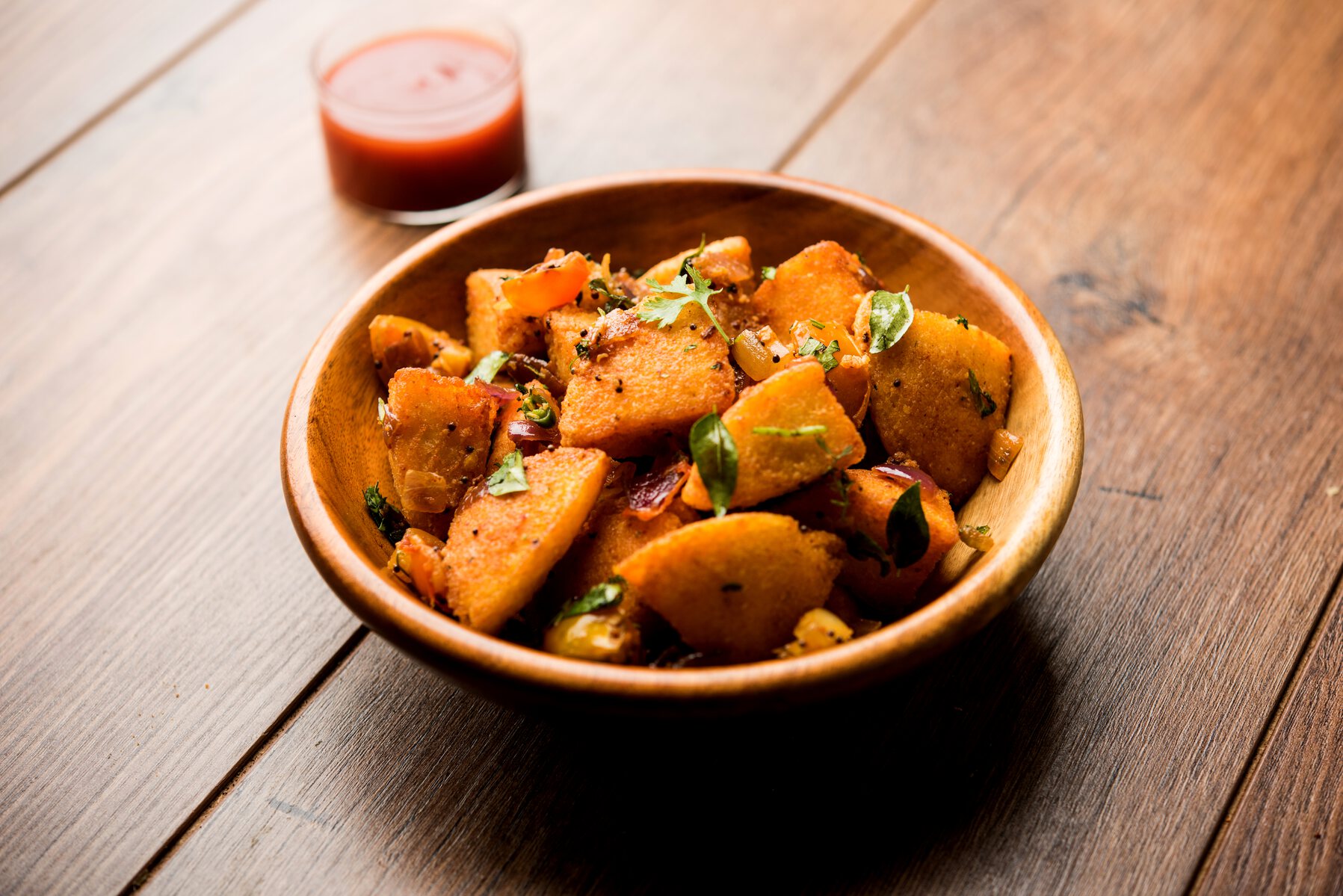
Gudi Padwa is a time to indulge in delicious traditional dishes, and Batata Bhaji is one of the most popular Gudi Padwa foods. This simple yet flavourful Maharashtrian dish is made with boiled potatoes, tempered with mustard seeds, curry leaves, green chilies, and turmeric, creating a mildly spiced and aromatic preparation. Soft and comforting, Batata Bhaji is a staple in festive meals and is often served as a side dish to complement other delicacies. Its vibrant yellow hue and delightful flavours make it a must-have during Gudi Padwa celebrations.
Best served with:
Batata Bhaji pairs perfectly with hot puris for a traditional festive meal. It also goes well with varan-bhat (dal-rice) and a drizzle of ghee, making for a wholesome and comforting combination.
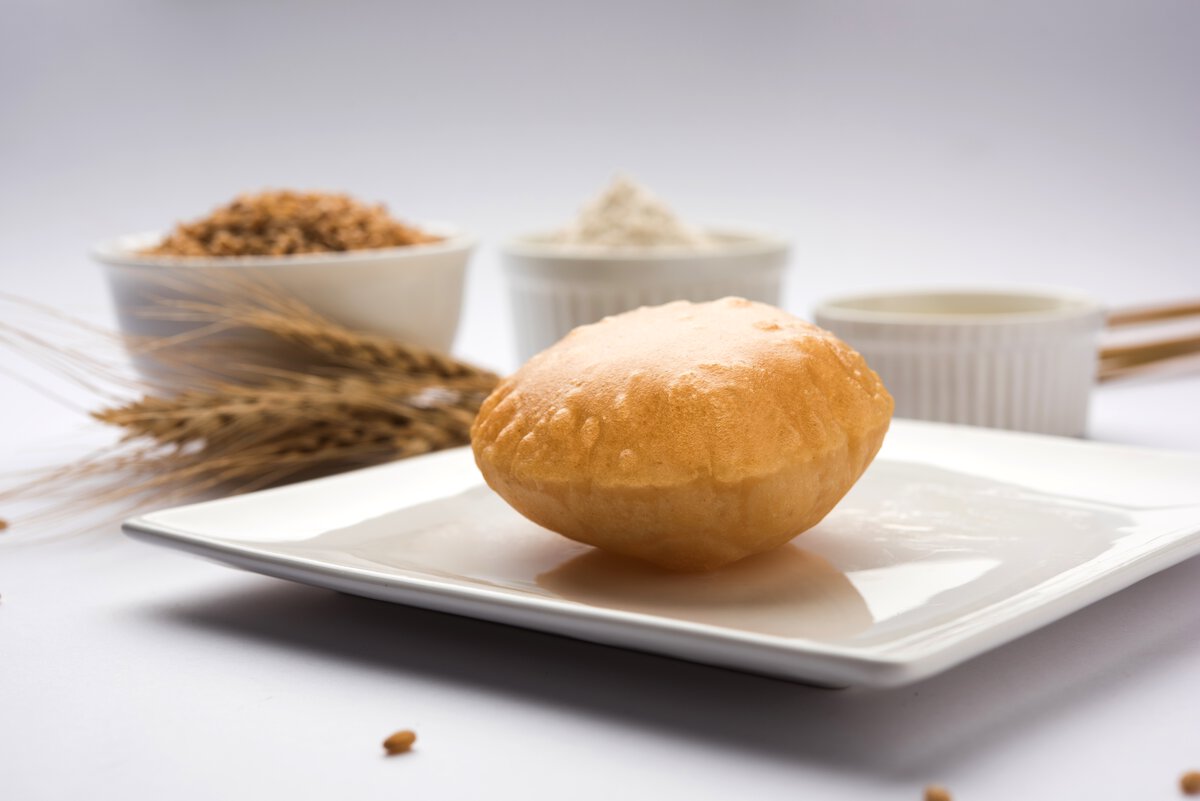
Gudi Padwa celebrations are incomplete without the comforting and flavourful combination of Poori Bhaji, one of the most loved Gudi Padwa special foods. This classic dish consists of crispy, golden pooris, deep-fried to perfection, served with a mildly spiced Batata Bhaji made from boiled potatoes, tempered with mustard seeds, green chilies, and turmeric. The combination of fluffy pooris and flavourful bhaji makes it a staple in Maharashtrian festive feasts, bringing families together over a delicious meal.
Best served with:
Poori Bhaji tastes best with a side of shrikhand for a perfect sweet and savoury balance. It also pairs well with spicy pickle or coconut chutney, adding extra flavour to the festive meal.
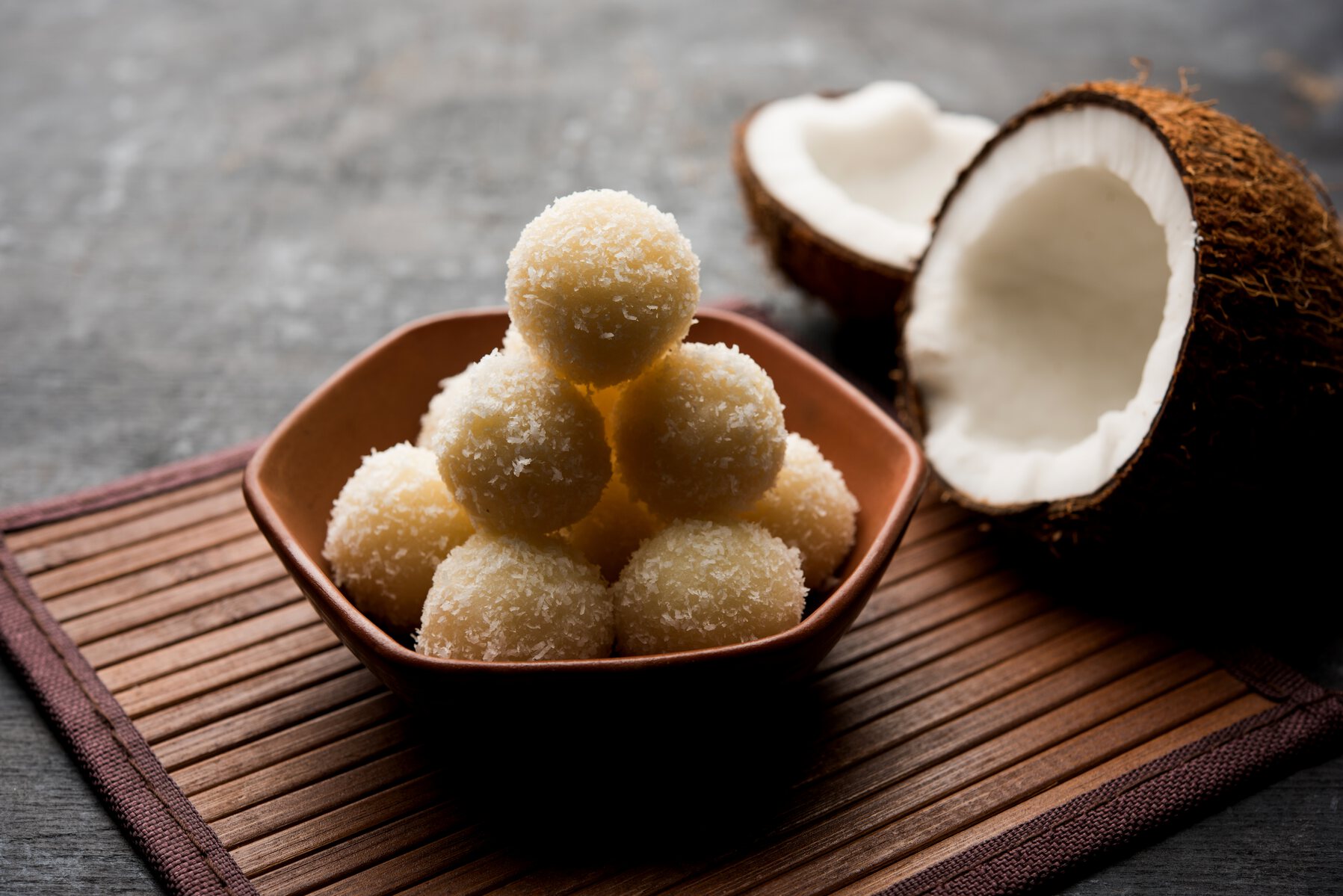
Gudi Padwa is a time for festive sweets, and Coconut Laddoo is a delightful addition to the list of Gudi Padwa special foods. These soft and flavourful laddoos are made with freshly grated coconut, condensed milk or jaggery, and a hint of cardamom, creating a melt-in-the-mouth texture. Simple yet indulgent, Coconut Laddoo is loved for its rich taste and ease of preparation. Often prepared as an offering to the deities, these laddoos symbolize sweetness and prosperity, making them a perfect festive treat for Gudi Padwa celebrations.
Best served with:
Coconut Laddoo pairs wonderfully with a warm glass of kesar milk or dry fruit sherbet for a rich festive experience. It also complements savoury snacks like chiwda, balancing the flavours in a celebratory meal.

Among the many Gudi Padwa special foods, Masale Bhaat holds a special place as a fragrant and flavourful festive dish. This traditional Maharashtrian spiced rice is made with aromatic spices, goda masala, and vegetables like brinjal or peas, giving it a unique taste. The dish is known for its rich flavours, mildly spicy kick, and the comforting warmth it brings to any festive meal. Often prepared during celebrations and religious feasts, Masale Bhaat is a must-have on Gudi Padwa, symbolizing abundance and togetherness.
Best served with:
Masale Bhaat pairs perfectly with cooling raita or spicy kadhi, balancing its bold flavours. It also goes well with a dollop of ghee and crispy papad, making for a wholesome festive meal.
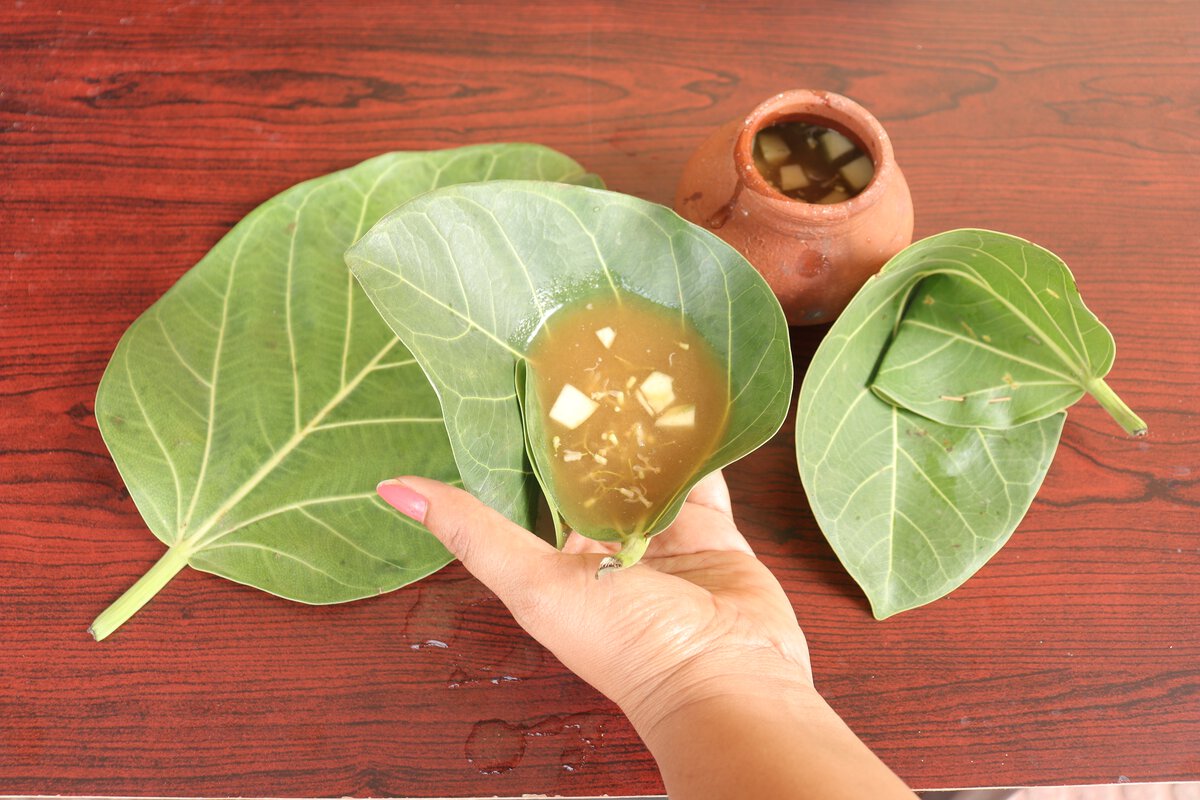
Ugadi Pachadi is a special dish symbolizing life's different emotions with its six flavours -sweet (jaggery), sour (tamarind), bitter (neem flowers), spicy (pepper), salty (salt), and tangy (raw mango). It reminds us to embrace all aspects of life with balance.
Quick Recipe:
Ingredients: Tamarind pulp, jaggery, raw mango, neem flowers, black pepper, salt, and water.
Method: Mix tamarind pulp and jaggery until dissolved. Add chopped mango, neem flowers, pepper, and salt. Stir well, adjust water, and serve fresh.
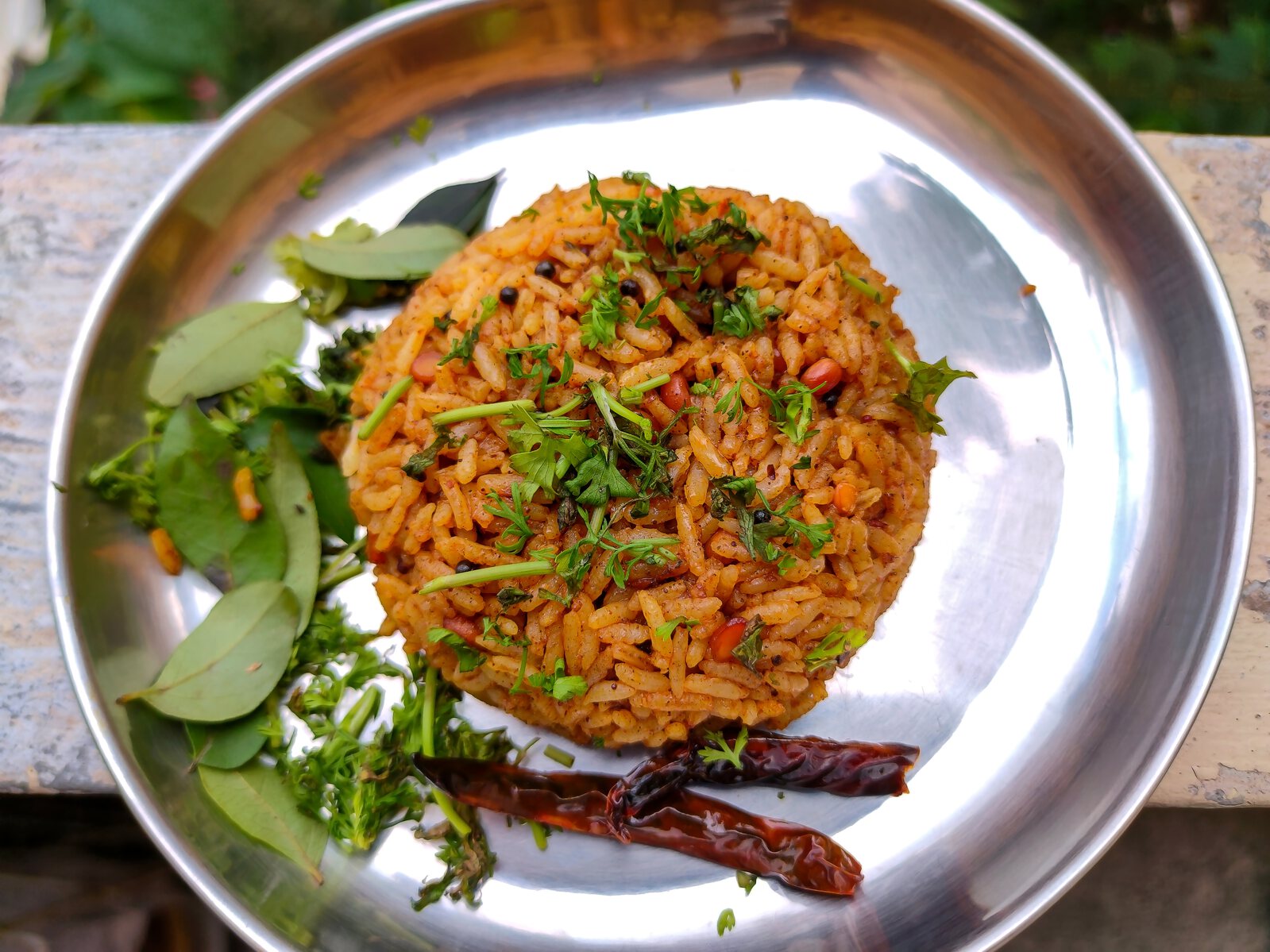
Pulihora, also known as tamarind rice, is a popular South Indian dish prepared during Ugadi and other festivals. Its tangy, spicy, and slightly sweet flavours make it a festive favourite. Made with tamarind pulp, tempered spices, and cooked rice, Pulihora symbolizes prosperity and is often offered as naivedyam (prasad).
Quick Recipe:
Ingredients: Cooked rice, tamarind pulp, green chilies, mustard seeds, curry leaves, turmeric, dry red chilies, chana dal, urad dal, jaggery, salt, and peanuts.
Method: Heat oil, add mustard seeds, dals, red chilies, curry leaves, and green chilies. Stir in turmeric, tamarind pulp, jaggery, and salt, cook until thick. Mix with cooked rice and let it absorb the flavours before serving.
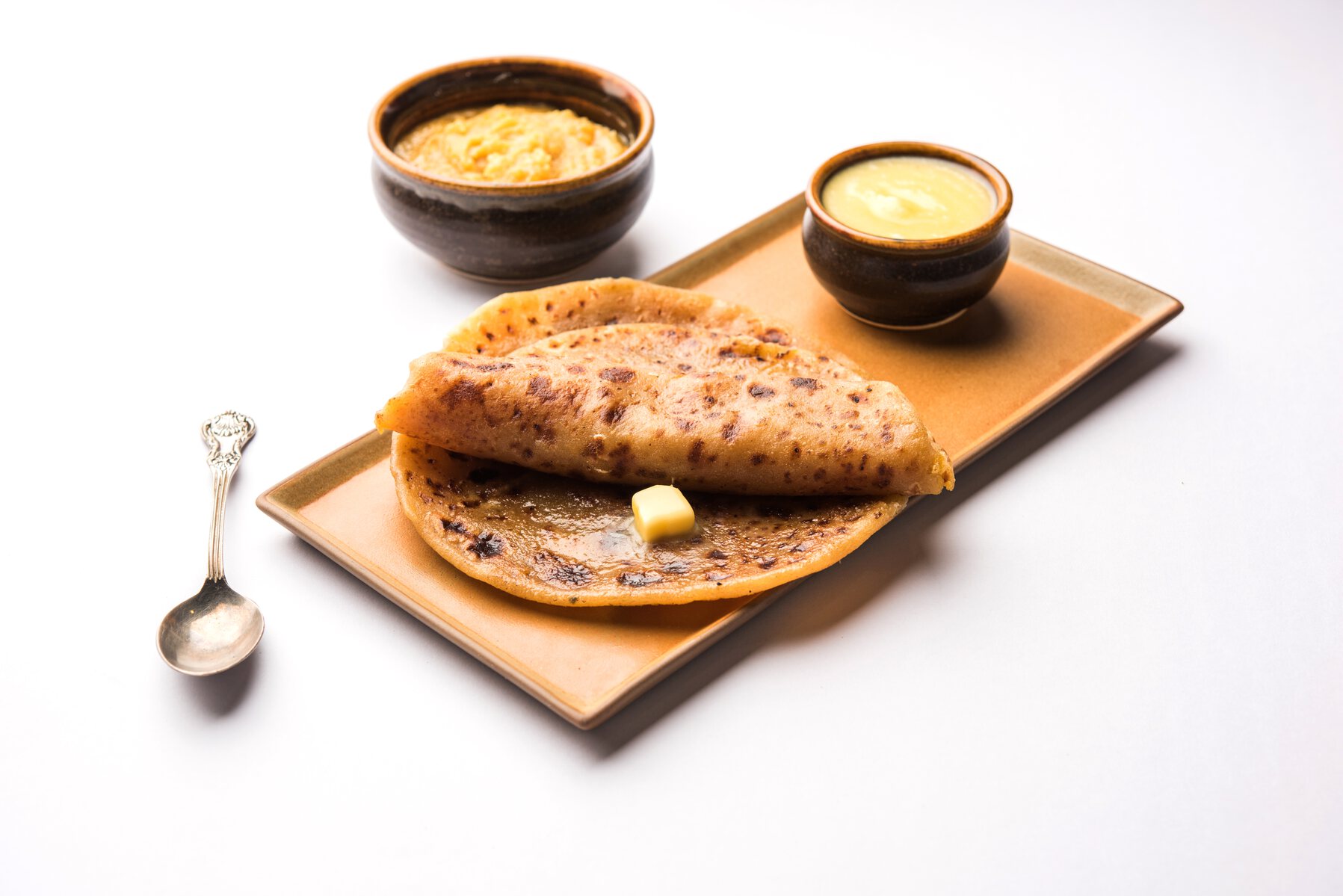
Bobbatlu, also known as Puran Poli, is a popular sweet flatbread made during Ugadi and other South Indian festivals. Stuffed with a delicious mix of jaggery and lentils, this soft and flavorful delicacy symbolizes prosperity and sweetness in life.
Quick Recipe:
Ingredients: Wheat flour, chana dal, jaggery, cardamom powder, ghee, and water.
Method: Cook chana dal until soft, mash, and mix with jaggery and cardamom to form the filling. Knead wheat flour into a soft dough. Roll out small discs, stuff with the filling, and flatten into thin circles. Roast on a pan with ghee until golden brown. Serve warm with ghee or milk.
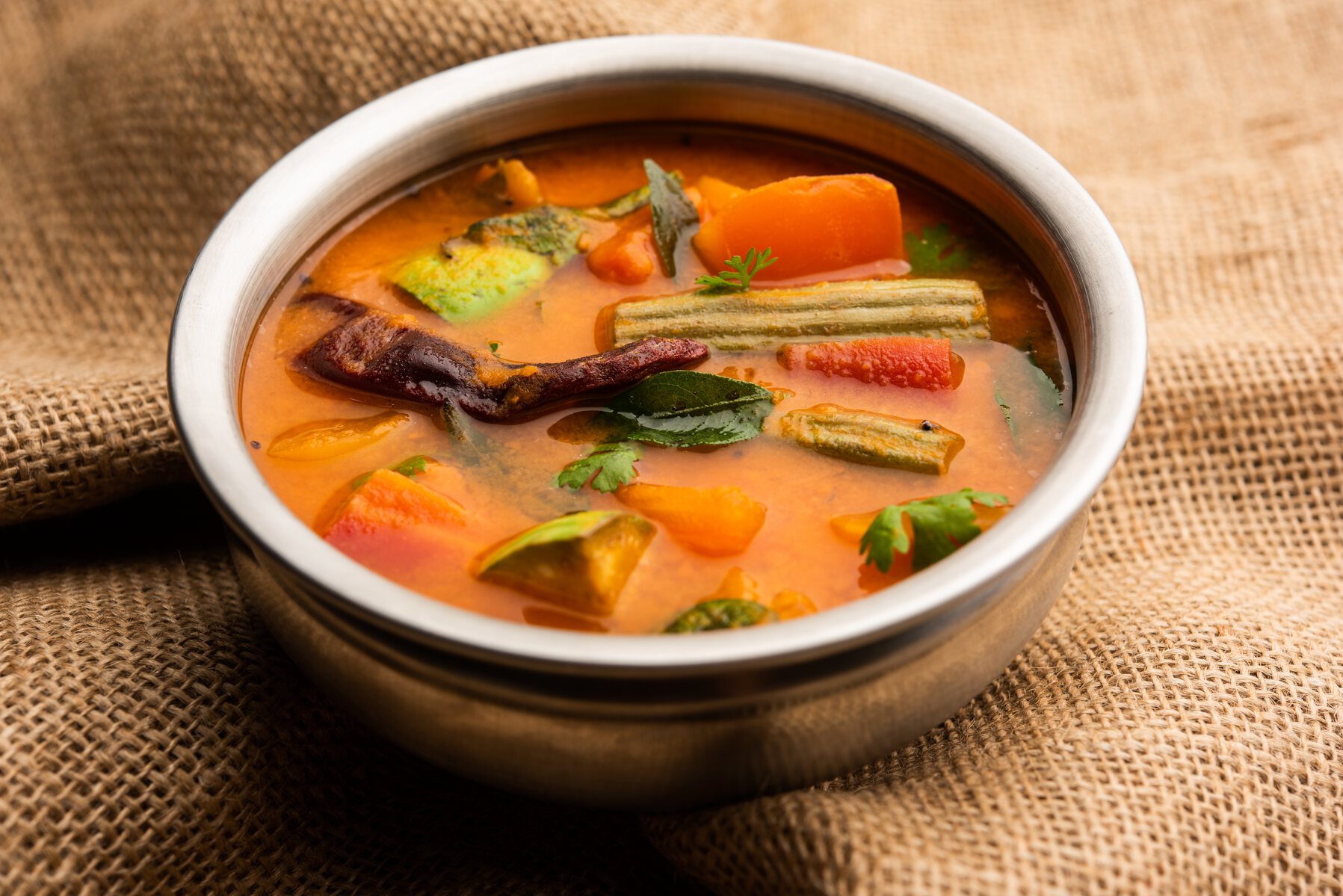
Mango Sambar is a flavourful and aromatic South Indian dish, prepared especially during Ugadi to celebrate the arrival of mango season. The tanginess of raw mango blends beautifully with lentils and spices, making it a perfect addition to the festive meal.
Quick Recipe:
Ingredients: Toor dal, raw mango (chopped), tamarind extract, mustard seeds, curry leaves, dry red chilies, sambar powder, turmeric, salt, and jaggery.
Method: Cook toor dal until soft. In another pot, temper mustard seeds, red chilies, and curry leaves. Add chopped mango, tamarind extract, sambar powder, turmeric, and jaggery. Let it simmer until mango softens. Mix in cooked dal, adjust consistency, and simmer for a few minutes. Serve hot with rice or idli.
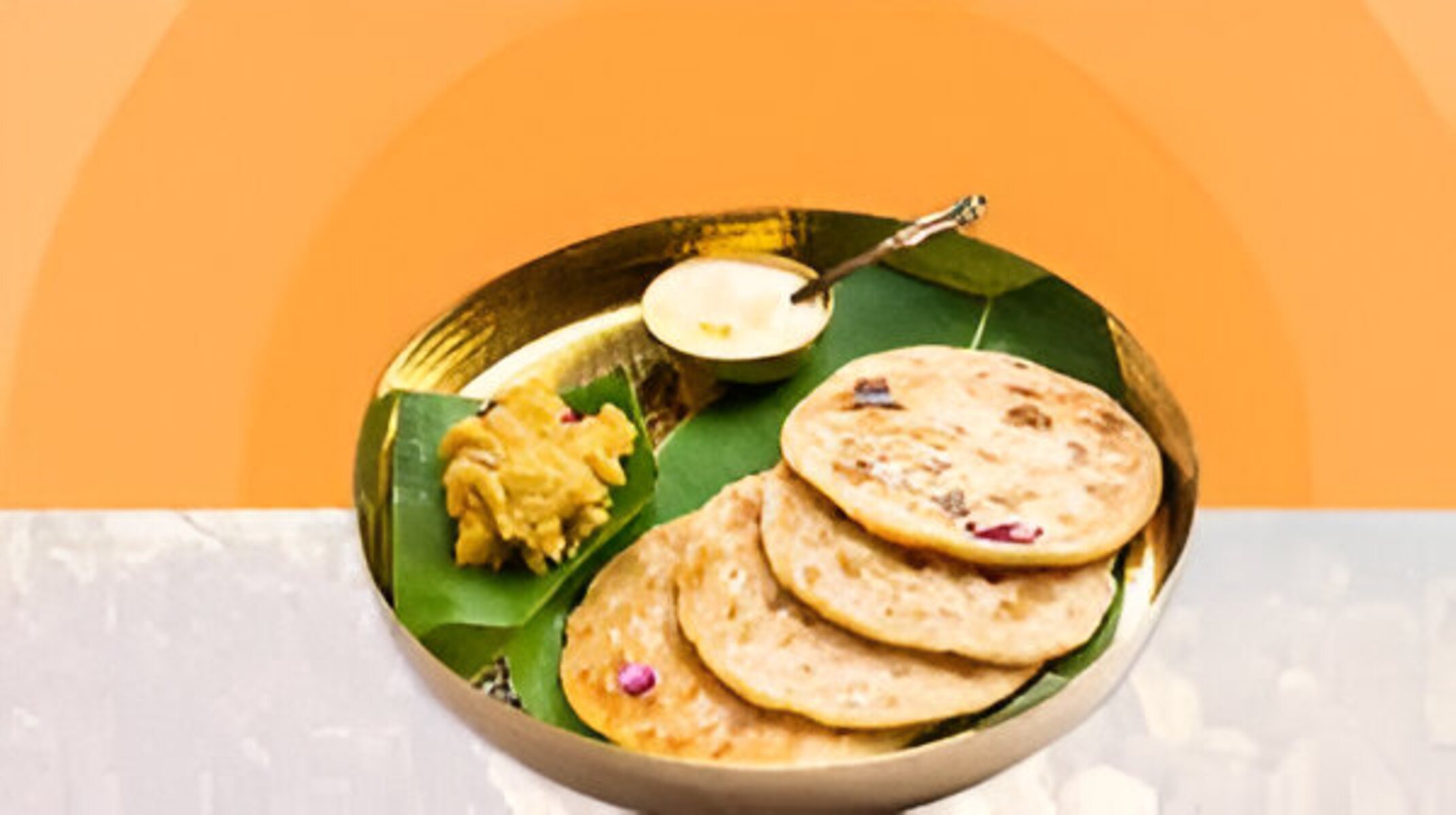
Obbattu, also known as Holige or Bobbatlu, is a traditional South Indian sweet prepared during Ugadi. This soft, golden flatbread is stuffed with a delicious jaggery and lentil filling, making it a festive favourite.
Quick Recipe:
Ingredients: Wheat flour, chana dal, jaggery, cardamom powder, turmeric, ghee, and water.
Method: Cook chana dal until soft, mash it, and mix with jaggery and cardamom powder to make the filling. Knead wheat flour into a soft dough with a pinch of turmeric. Roll out small discs, stuff them with the filling, and flatten into thin circles. Roast on a pan with ghee until golden brown. Serve warm with ghee or milk.
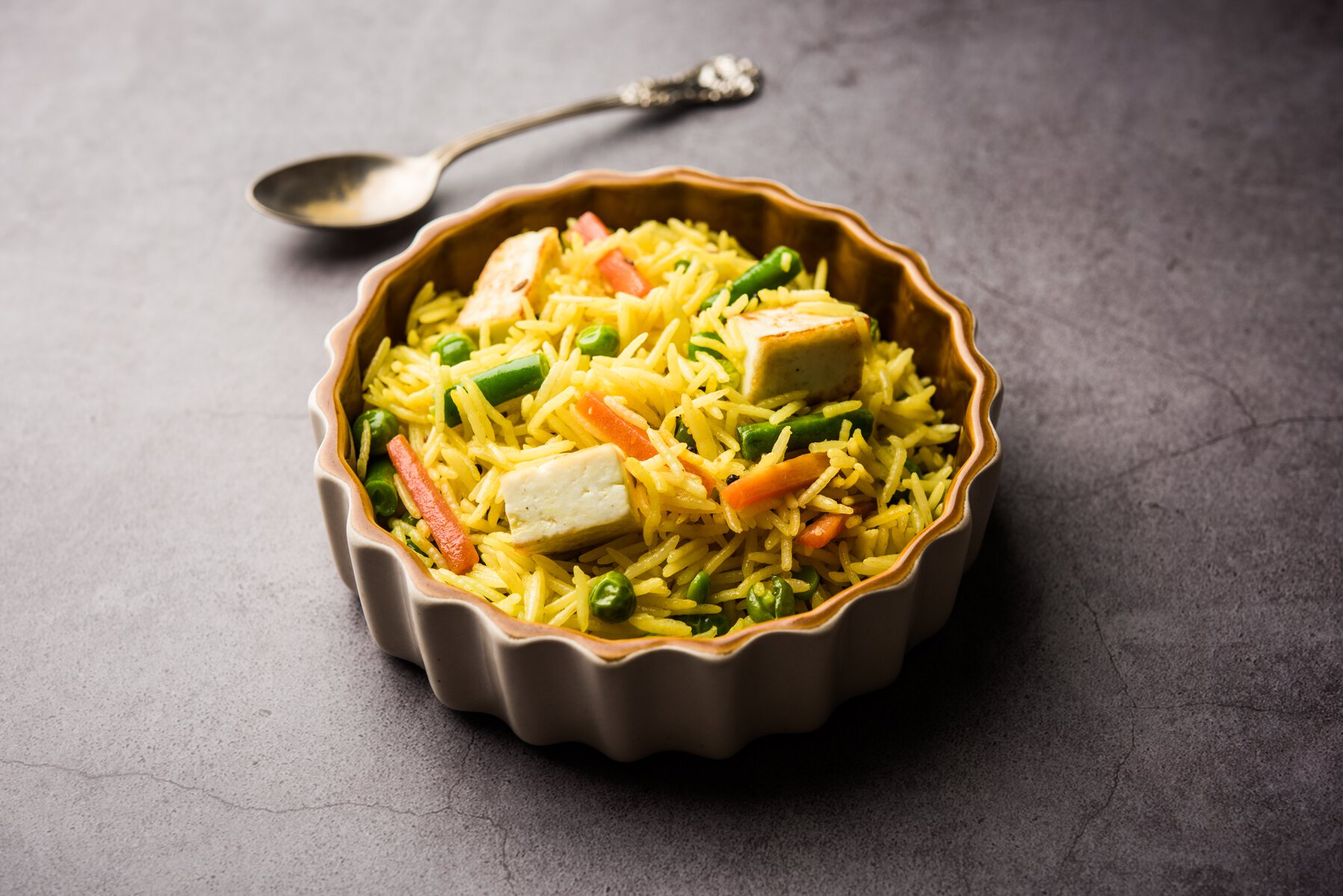
Mango Rice is a delicious South Indian dish that perfectly captures the essence of summer with its tangy and refreshing flavours. Made using raw mango and simple spices, it is a popular choice for Ugadi celebrations, bringing a unique balance of sourness and mild spice to the festive spread. The grated mango enhances the taste of fluffy rice, making it a comforting yet flavourful dish enjoyed by all.
Quick Recipe:
Ingredients: Cooked rice, grated raw mango, mustard seeds, green chilies, curry leaves, turmeric, dry red chilies, chana dal, urad dal, peanuts, salt, and oil.
Method: Heat oil, temper mustard seeds, dals, red chilies, green chilies, curry leaves, and peanuts. Add turmeric and grated raw mango, sauté lightly, and mix in salt. Combine with cooked rice, toss well, and serve warm.

Payasam, a rich and creamy South Indian dessert, is an integral part of Ugadi celebrations. Made with milk, jaggery or sugar, and flavoured with cardamom, this sweet delicacy symbolizes prosperity and joy. Whether prepared with rice, vermicelli, or lentils, Payasam’s smooth texture and aromatic flavours make it a must-have for the festive feast.
Quick Recipe:
Ingredients: Milk, vermicelli (or rice/moong dal), jaggery (or sugar), cardamom powder, ghee, cashews, and raisins.
Method: Heat ghee in a pan, fry cashews and raisins until golden, and set aside. Roast vermicelli lightly, then add milk and simmer until soft. Stir in jaggery or sugar and cardamom powder, mix well, and cook for a few minutes. Garnish with fried nuts and serve warm or chilled.

Rava Kesari is a popular South Indian sweet dish made from semolina (rava), ghee, and sugar, infused with the rich aroma of saffron and cardamom. A staple during Ugadi celebrations, this melt-in-the-mouth delicacy is loved for its smooth texture and vibrant golden hue. Quick and easy to prepare, Rava Kesari is often served as a prasad (offering) and enjoyed as part of the festive feast.
Quick Recipe:
Ingredients: Semolina (rava), sugar, ghee, water, saffron strands, cardamom powder, cashews, and raisins.
Method: Heat ghee in a pan, roast cashews and raisins until golden, and set aside. In the same pan, roast semolina until fragrant. Boil water separately, then add to the rava while stirring. Cook until thick, then mix in sugar, saffron, and cardamom powder. Stir well, cook until smooth, and garnish with fried nuts. Serve warm.
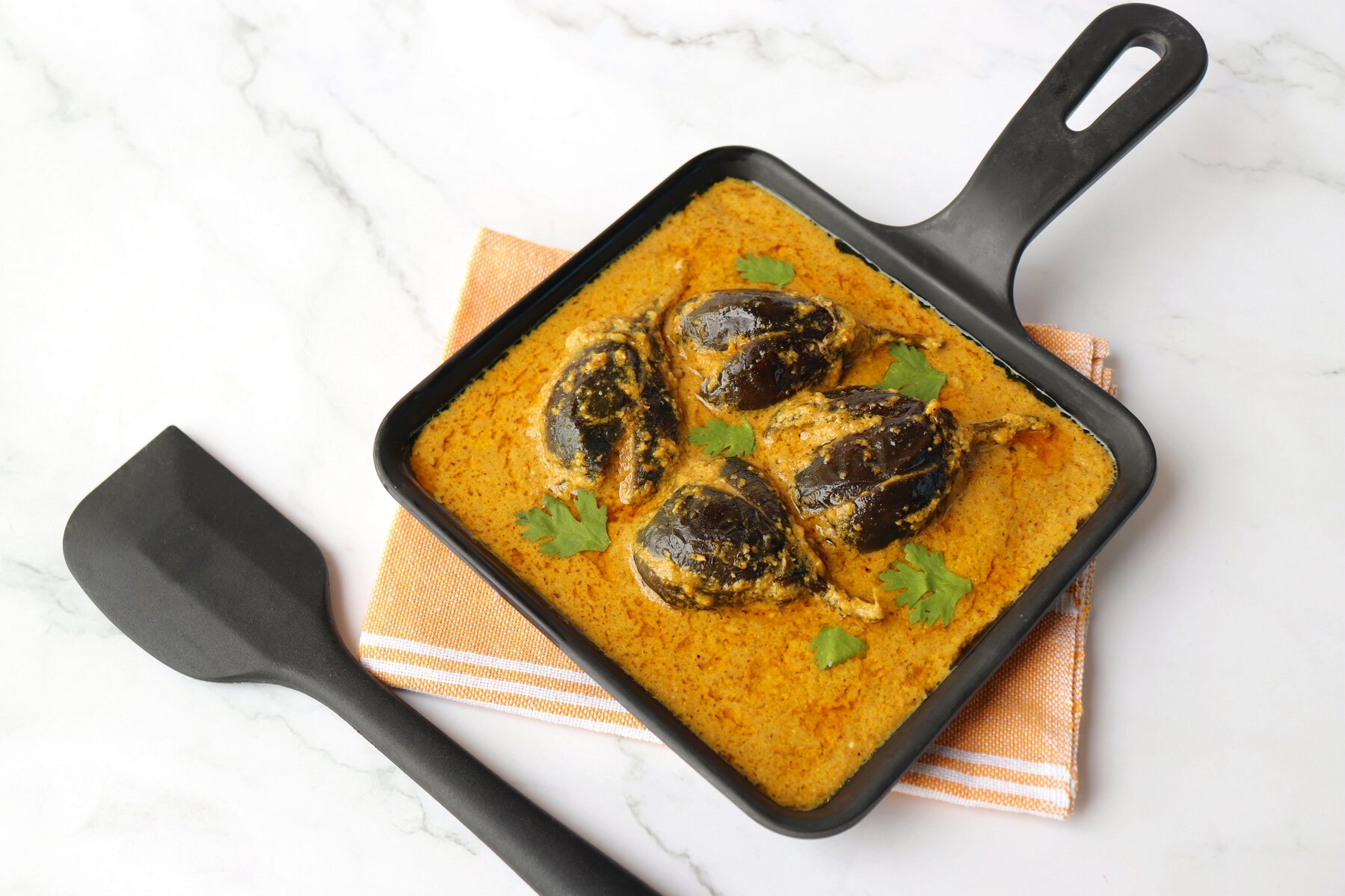
A staple in Ugadi feasts, Gutti Vankaya Curry is an aromatic Andhra-style dish featuring brinjals stuffed with a spiced coconut-peanut mixture. Slow-cooked to perfection, the brinjals absorb the rich flavours, creating a creamy, tangy curry.
Quick Recipe:
Ingredients: Small brinjals, peanuts, sesame seeds, coconut, tamarind, red chilies, garlic, mustard seeds, curry leaves, turmeric, and oil.
Method: Roast and blend peanuts, sesame, coconut, tamarind, and spices into a thick paste. Stuff into slit brinjals. Sauté mustard seeds and curry leaves in oil, add stuffed brinjals, and cook until tender. Simmer with water until the curry thickens. Serve hot with rice or roti.
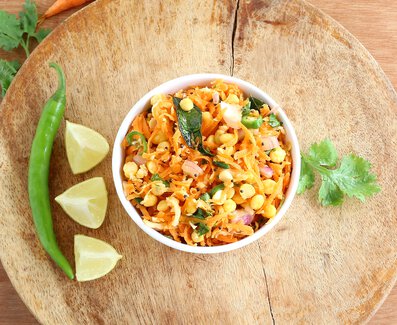
Kosambari is a light and nutritious South Indian salad made with lentils, fresh vegetables, and a simple tempering. Often prepared during Ugadi celebrations, this dish is packed with freshness and crunch, offering a perfect balance to the festive feast.
Quick Recipe:
Ingredients: Moong dal (soaked), grated carrot/cucumber, green chilies, coconut, lemon juice, mustard seeds, curry leaves, and coriander.
Method: Mix soaked moong dal with grated carrot/cucumber, coconut, and chopped chilies. Heat oil, temper mustard seeds and curry leaves, then pour over the salad. Add lemon juice, mix well, and serve fresh.
Gudi Padwa special foods and popular Ugadi foods bring families together, celebrating tradition, flavours, and festivity. These dishes not only add richness to the occasion but also symbolize prosperity, balance, and joy. Preparing and sharing these festive delights keeps cultural heritage alive, making the New Year celebrations even more meaningful.
Mahindra Holidays & Resorts India Ltd. (MHRIL), a part of Leisure and Hospitality sector of the Mahindra Group, offers quality family holidays primarily through vacation ownership memberships and brings to the industry values such as reliability, trust and customer satisfaction. Started in 1996, the company's flagship brand ‘Club Mahindra’, today has over 290,000 members , who can holiday at 140+ resorts in India and abroad.